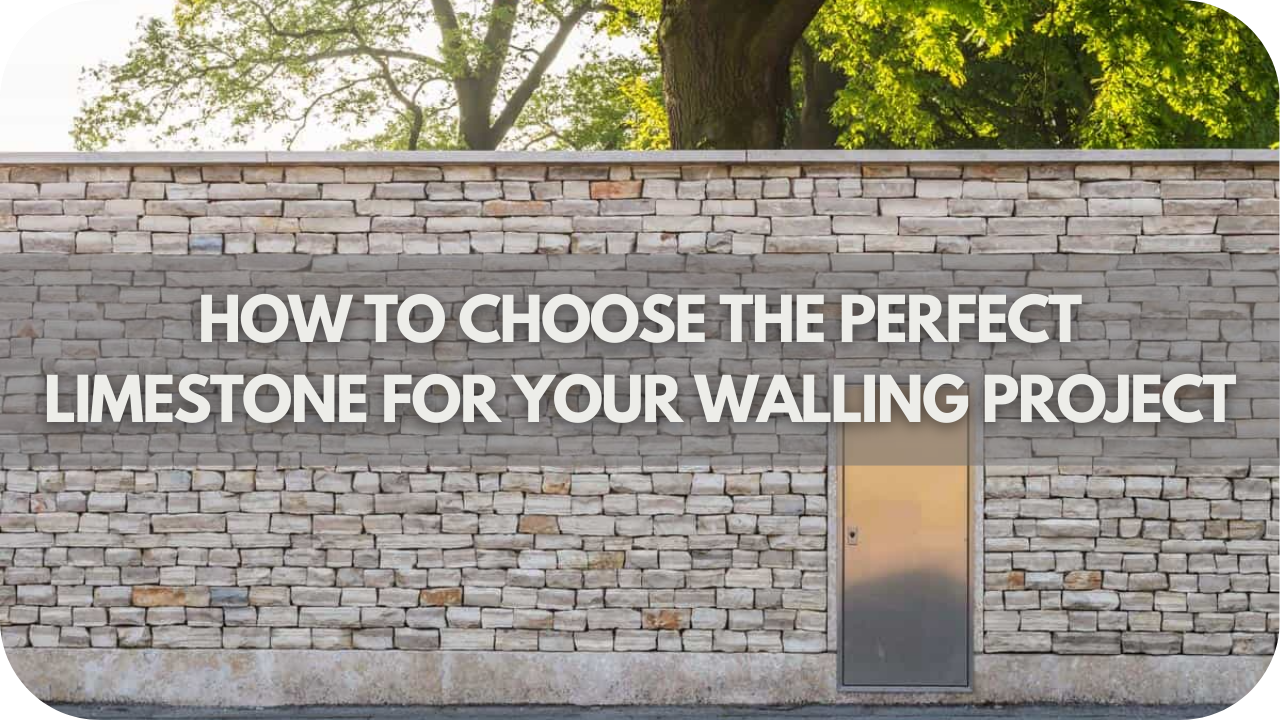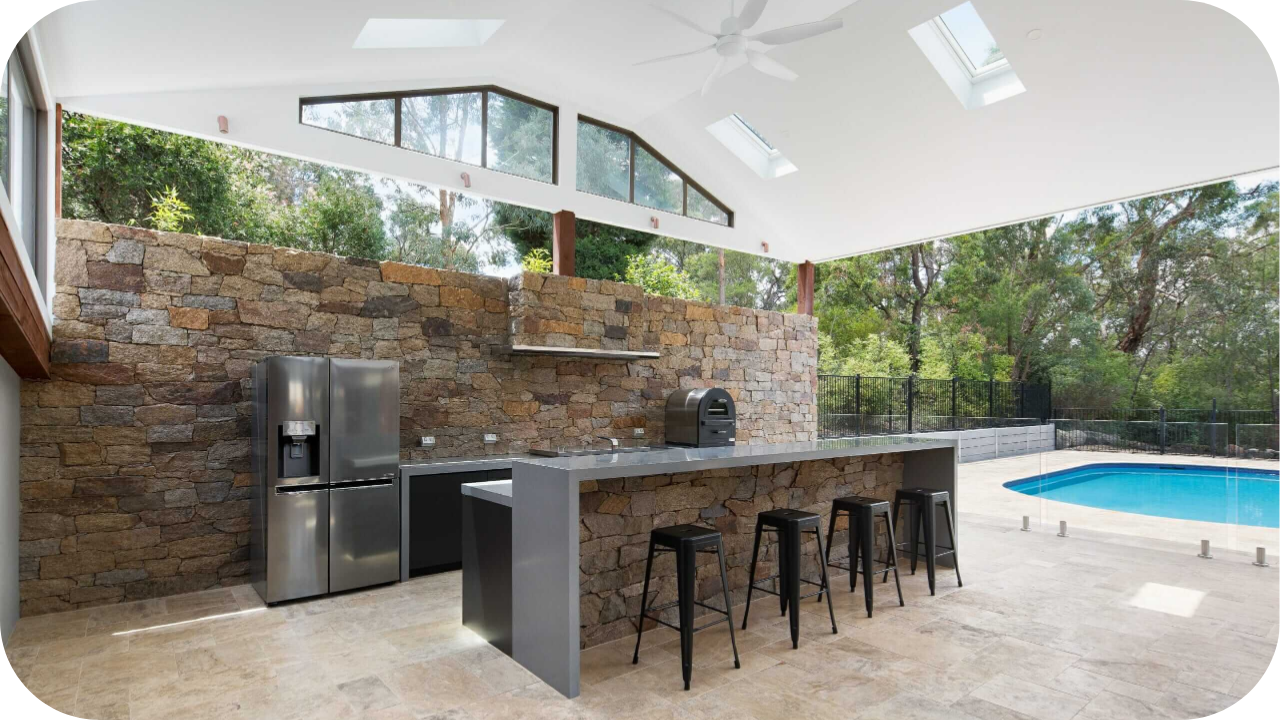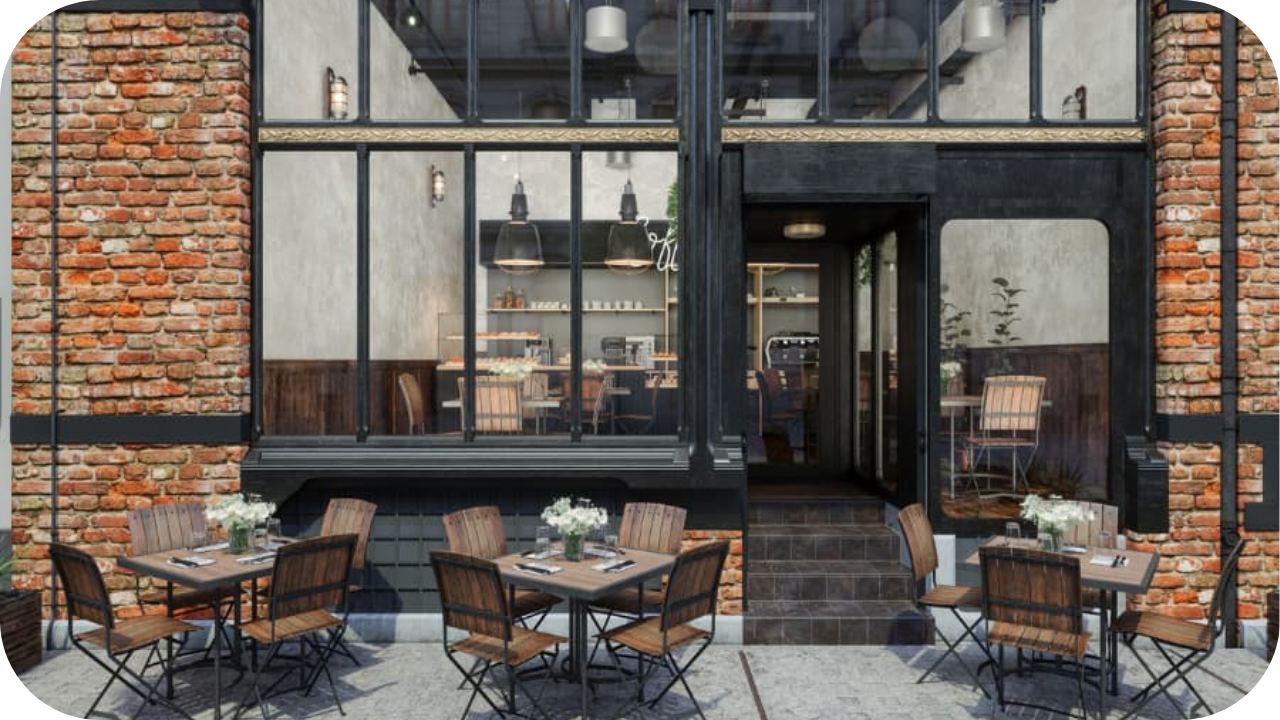
Choosing the right limestone for walling can be overwhelming, with so many options available.
With variations in colour, texture, and durability, making the wrong choice can lead to costly mistakes and an unsatisfactory finish.
This guide will help you easily navigate the selection process, providing essential tips and insights to ensure you select the perfect limestone for your walling project, enhancing aesthetics and longevity.
Factors to Consider When Choosing Limestone
Choosing the perfect limestone for your walling project requires careful consideration of several factors.
Each aspect is crucial in achieving the desired look and performance, from colour and texture to durability and size. Here are the key factors to consider when selecting limestone for your project:
1. Durability
Limestone’s ability to withstand weathering and erosion is crucial for long-lasting walling projects. This characteristic varies significantly among different types of limestone. Some varieties are highly resistant to weathering, maintaining their structural integrity and appearance for decades, while others may deteriorate more quickly when exposed to the elements.
Factors affecting durability include the stone’s mineral composition, density, and formation process. When selecting limestone, inquire about its compressive strength and abrasion resistance to gauge its durability.
2. Climate
The local climate is pivotal in determining the most suitable limestone for your project. Areas with frequent freeze-thaw cycles require resilient stone to prevent cracking and spalling. In coastal regions, salt-resistant limestone varieties are essential to withstand the corrosive effects of sea spray.
Hot, arid climates may require limestone with low thermal expansion coefficients to prevent warping or cracking under intense heat. When selecting, consider both the macro and microclimate of your specific location.
3. Porosity
Porosity, often overlooked, is a critical factor in limestone selection. It refers to the volume of voids or pores within the stone and affects its absorption rate and stain resistance. Highly porous limestone may absorb more water, leading to potential issues like efflorescence or algae growth.
It may also be more susceptible to environmental pollutants or staining of organic materials. Conversely, less porous limestone typically offers better resistance to these issues but may have different aesthetic qualities. Ask for porosity percentages and consider how they align with your project’s requirements and local environmental conditions.
4. Density
The density of limestone is directly related to its strength and durability. Higher-density limestone generally offers greater compressive strength, making it more resistant to cracking and chipping. It also tends to have lower absorption rates, which can contribute to better weathering resistance.
When choosing limestone, request specific gravity measurements or density values. While higher density often indicates superior physical properties, it may also mean the stone is heavier, potentially affecting installation methods and structural requirements.
5. Maintenance
Different limestone varieties have varying maintenance needs, which should be factored into your decision-making process. Some types may require regular sealing to maintain their appearance and protect against staining and weathering. Others might need periodic cleaning to prevent dirt or biological growth buildup.
Consider the long-term commitment required for upkeep, including the frequency of treatments, associated costs, and the availability of suitable maintenance products. Also, consider how the stone’s appearance might change with or without regular maintenance.
6. Cost
While initial cost is important, evaluating limestone options based on their lifetime value is crucial. Cheaper varieties might seem attractive initially, but they could lead to higher long-term expenses due to increased maintenance needs or shorter lifespans.
Factors include the purchase price of the stone, transportation costs, installation complexity, and ongoing maintenance expenses. Sometimes, investing in a higher-quality limestone upfront can result in significant savings over the life of your walling project.
7. Availability
The availability of your chosen limestone can significantly impact your project’s cost and timeline. Some varieties may be sourced locally, reducing transportation costs and carbon footprint, while others might need to be imported, potentially leading to longer lead times and higher expenses.
Ensure that your selected limestone can be sourced sufficiently for your entire project, including extra for potential future repairs or extensions. Also, the reliability of the supply chain should be considered, especially for rarer or imported varieties.
8. Environmental factors
In today’s environmentally conscious world, the ecological impact of your limestone choice is increasingly significant. Locally sourced limestone typically has a lower carbon footprint due to reduced transportation emissions. Some quarries employ more sustainable extraction methods than others.
Consider asking about the quarry’s environmental policies and reclamation practices. Some limestone varieties may be more energy-intensive to extract and process than others. If your project prioritizes sustainability, consider certifications or environmental impact assessments for your chosen stone.
9. Building Regulations
Local building codes and regulations can significantly influence your limestone selection. Some areas may restrict certain limestone finishes for aesthetic or safety reasons, and historical districts often have specific requirements to maintain architectural consistency.
Additionally, structural regulations may apply to the weight and installation methods of the stone. Before finalising your choice, consult with local authorities or a knowledgeable architect to ensure your selected limestone complies with all relevant building codes and zoning laws.
10. Installation expertise
The complexity of installation can vary significantly among limestone types. Some varieties may require specialised cutting tools or techniques, while others might demand particular mortar compositions or laying patterns.
Consider whether your chosen stone necessitates expert handling and factor this into your overall project plan. Improper installation can lead to issues like uneven weathering, structural instability, or premature deterioration.
If your selected limestone requires specialised skills, ensure that qualified masons or installers are available in your area, and factor their expertise into your project timeline and budget.
Types of Limestone for Walling
Many different types of limestone can be used for walling, each with unique properties and appearance. Some of the most popular types of limestone for walling include:
- Luxe: This limestone truly lives up to its name, offering a luxurious feel with its subtle shimmer and creamy, consistent colouring. Its understated elegance makes it suitable for interior and exterior applications, adding a touch of sophistication wherever it’s used.
- Beloka: Use Beloka limestone to infuse your space with warmth and natural beauty. Its honey-toned hues create a welcoming ambience, while its unique blend of textures and fossils adds visual interest and a touch of history to your walls.
- Tuscano: If you’re looking for a limestone that exudes character and depth, Tuscano is an excellent choice. Its rich, earthy tones and varied textures create a rustic yet refined aesthetic, perfect for adding a touch of old-world charm to your project.
- Jamieson: This versatile limestone is a true chameleon, adapting seamlessly to traditional and contemporary designs. Its neutral tones and subtle veining create a timeless backdrop that allows other design elements to shine.
- Grange: Cool grey tones and a consistent texture make Grange limestone a popular choice for those seeking a clean, modern aesthetic. Its understated elegance complements various architectural styles, from minimalist to industrial.
- Jasper: Make a bold statement with Jasper limestone. Its striking network of dark veins creates a dramatic visual impact, adding a touch of dynamism and intrigue to any space.
- Marrakesh: Look no further than Marrakesh limestone for a truly unique and eye-catching wall. Its fossil-like patterns and warm, earthy tones evoke a sense of ancient wonder, transforming your walls into works of art.
Tips for Choosing the Right Limestone Supplier
When choosing a supplier for your limestone walling project, it is important to consider the following factors:
- The supplier’s reputation: Ask friends, family, and contractors for recommendations. You can also read online reviews of different suppliers.
- The quality of the limestone: The quality of the limestone will affect the appearance and durability of your wall. Be sure to scrutinise the limestone before you purchase it.
- The price of the limestone: Limestone can vary depending on the type, size, and finish. Be sure to get quotes from multiple suppliers before you make a decision.
- The availability of the limestone: Some types of limestone may be more difficult to find than others. Be sure to ask the supplier about the availability of the limestone you are interested in.
- The delivery time: The delivery time for limestone can vary depending on the supplier and the quarry’s location. Be sure to ask the supplier about the delivery time before you purchase the limestone.
Maintenance and Care of Limestone
Limestone, renowned for its natural elegance and durability, requires surprisingly little maintenance to retain its captivating charm. Let’s delve into the specifics of preserving your limestone walling for years to come:
- Regular dusting and sweeping: A simple sweep with a soft broom or a gentle dusting with a microfiber cloth will remove loose dirt and debris, preventing them from scratching the surface.
- Periodic washing: Wash the limestone with a mild soap solution and warm water for a deeper clean. Use a soft sponge or cloth to avoid abrasion. Rinse thoroughly with clean water to remove any soap residue.
- Avoid harsh chemicals: Acidic cleaners, bleach, and abrasive scouring powders can etch or discolour the limestone. Stick to pH-neutral cleaners specifically formulated for natural stone.
- Protective barrier: Sealing the limestone protects against stains and moisture penetration. This is especially important in high-traffic areas, kitchens, bathrooms, or outdoor installations exposed to the elements.
- Reapplication: Depending on the type of sealer and the level of wear and tear, resealing may be necessary every few years. Consult the sealer manufacturer’s instructions for specific recommendations.
- Prompt action: The key to successful stain removal is to act quickly. Blot spills immediately with a clean, absorbent cloth. Avoid rubbing, as this can spread the stain deeper into the stone.
- Poultice method: For stubborn stains, a poultice may be necessary. This involves applying a paste-like mixture (often made of absorbent material and a cleaning agent) to the stain and allowing it to draw out the discolouration.
- Expert care: In the event of significant damage, such as cracks or chips, it’s best to consult a professional stone restoration specialist. They have the expertise and specialized tools to repair and restore the limestone to its original beauty.
Conclusion
Choosing the right limestone for your walling project can transform your space beautifully. By considering factors like colour, texture, and durability, you’ll make a choice that enhances your design and stands the test of time. Ready to elevate your project? Explore our curated selection of high-quality limestone today and bring your vision to life.
More To Explore

What Makes Hotham Granite Ideal for Kitchen Surfaces?
Selecting the ideal materials for kitchen surfaces, Hotham Granite stands out as a highly durable and aesthetically pleasing option. While it’s often associated with traditional

Stone Cladding for Boutique Stores and Cafés
In boutique stores and cafés, the first impression isn’t just important—it’s everything. Customers often decide whether to walk in within seconds, and that decision can


